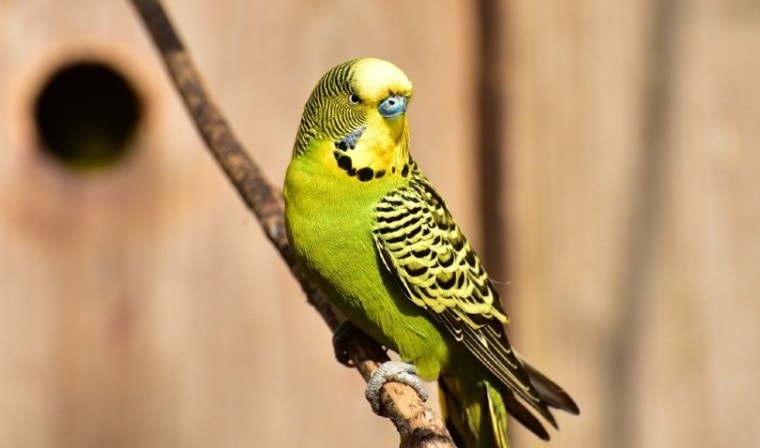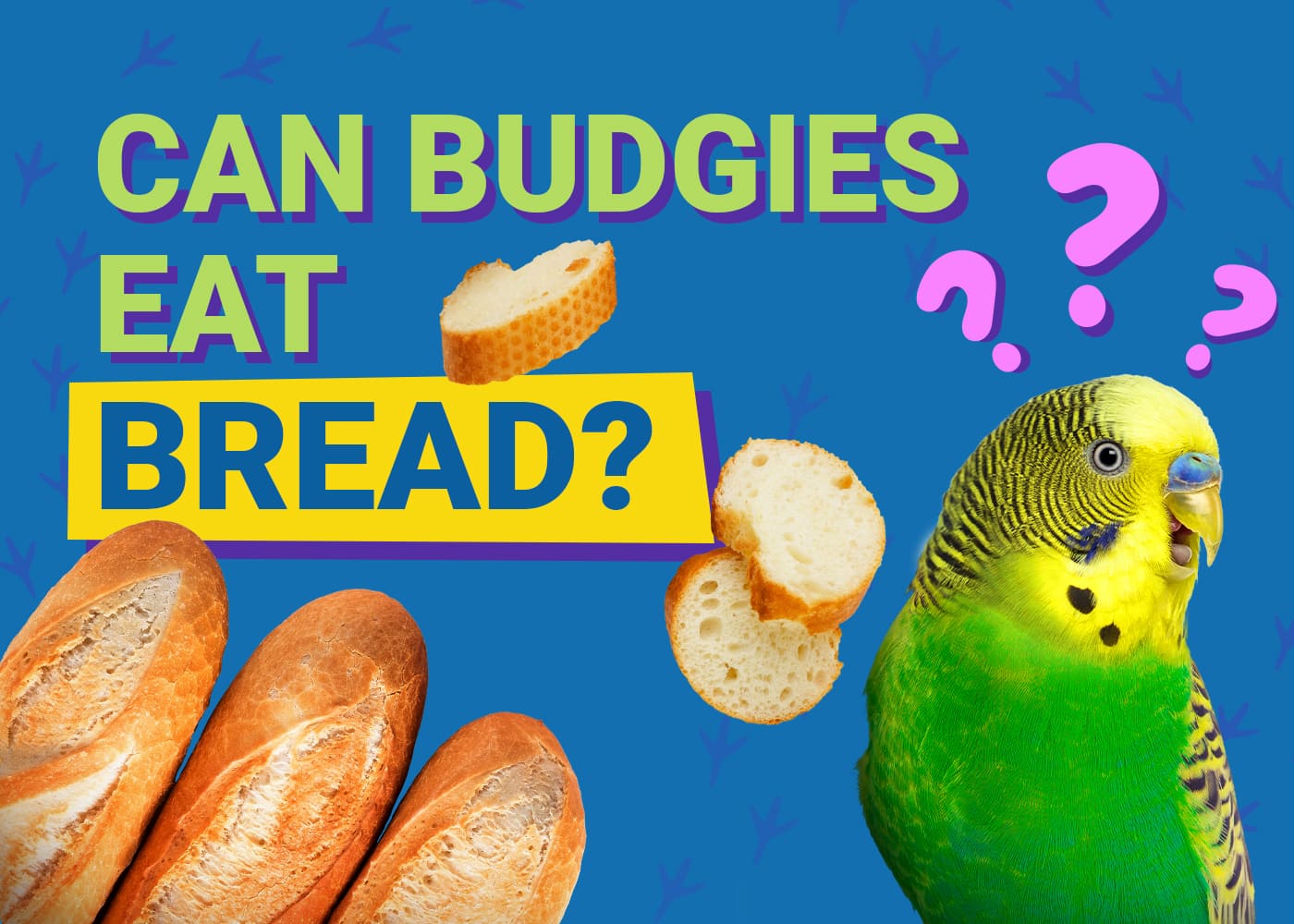
Green Parakeets are not commonly kept as pets due to export restrictions and legal protections. They typically survive longer in the wild than they do in captivity, so these birds don’t make particularly good pets and are best left in the wild. If you do find yourself in a position to inherit or legally acquire one of these birds, keep reading for more information.
Species Overview

| Common Names: | Mini |
| Scientific Name: | 15 – 35 pounds |
| Adult Size: | 12 – 15 years |
| Life Expectancy: | Cylindrical |
Origin and History
Green Parakeets are native to Central America. Their range extends from the Southernmost part of Texas to the Northernmost part of Nicaragua. They have been spotted in parts of Southern and Southeastern Texas, but it’s unclear if this is a native or feral population. They are usually found in woodlands and deciduous forests, while sometimes being found in palm groves, orchards, and woodland clearings. They tend to stay toward the outermost edges of woodlands and forests, preferring some open space nearby. They can be found in flocks of 100 birds or more, especially in food-rich areas.
They are considered a species of least concern, but their wild populations are in a steady decline. Habitat loss is their primary threat, but illegal capture for the pet trade is also a significant problem for these birds. They are not a popular pet species and are protected by the Mexican government. Their capture and export are illegal, but even before this occurred, only around 100-200 birds were being imported into the US annually.
Temperament
These birds are active and can be challenging to keep as pets. They are less friendly than similar birds, like Budgies and Cockatiels, especially with strangers. They do bond with people that they routinely interact with, but they still can be challenging and stubborn. They may be nippy and develop behavioral issues. They may also develop stress and boredom related issues, like plucking and overgrooming. Green Parakeets are highly intelligent birds, though, and they need social interaction. They enjoy toys, games, puzzles, and will do best if kept busy.
Speech & Vocalizations
They, like other Conures, have extremely loud squawks that can be startling. Some people find their squawking calls quite harsh and difficult to listen to. Although it’s not recommended to train your bird away from normal calls and sounds, it is important to prevent them from developing screaming habits. These birds in particular are prone to developing this bad habit and can become excessively loud and obnoxious without early intervention. They may learn a handful of words but tend to have smaller vocabularies than other types of Parrots.

Green Parakeet Colors and Markings
Green Parakeets do not have sexual dimorphism, so it isn’t possible to determine the sex of your bird visually. Adults are primarily bright green with bright green or yellow on the chest, abdomen, and underside of the tail and wings. They often have diffuse red feathering on the head and a hint of blue to the outermost edges of the flight feathers. The beak is yellowish-brown or tan, and the eyes are orange or brown. Hatchlings lack feathers and have dark eyes. As they grow into juveniles, the feathers begin to develop but the eyes stay dark until adulthood.
The 5 Tips for Caring for the Green Parakeet
1. Cage Setup
Green Parakeets should be kept in a cage that allows flight or climbing space. It should close securely to keep the bird from escaping. Perches, ladders, and toys are all great additions to the cage, as well as access to clean water and fresh food.
2. Cage Maintenance
Clean the bottom of the cage as needed, which should usually be multiple times per week to prevent waste buildup. Water should be refreshed at least once daily, and the bowl should be kept clean and free of algae and mold. The food bowl should be cleaned regularly to prevent the growth of bacteria. Any cleaning chemicals used should be bird safe and should not be used in the presence of your Green Parakeet.

3. Cage Mates
They can be kept in an environment with other similar types of birds, especially other types of Conures, but will do best with another Green Parakeet. The easiest way to have the best chance of bonding between the birds is to get them around the same time and ensure they are close to the same age but unrelated. Provide slow, safe introductions and have a backup plan for if things don’t work out.
4. Grooming
Apart from an occasional spritz or wipe down, your bird will likely require little to no grooming. Beak trims are unlikely to be necessary and wing trims are a personal preference. Nail trims will need to be performed to prevent overgrowth and breakage of nails. A trained person should be the one to perform nail, wing, and beak trims.
5. Activity
These birds are energetic and require daily activity. Providing an enriching cage environment and daily time out of the cage with social interaction will keep your bird active and happy. Games, puzzles, and toys are all good ways to create an enriching cage.
Common Health Problems
Green Parakeets don’t suffer from any species-specific diseases or illnesses. However, they are prone to the same types or problems that most captive birds are. Ensuring their cage is kept clean and hygienic will reduce the risk of bacterial, fungal, and viral infections from developing, as well as parasitic infestations. They can develop respiratory infections if kept too cold, too damp, or in the presence of certain chemicals, like some types of air fresheners and chemicals released by certain types of cookware. They may also develop boredom and stress related problems, like plucking. This can be headed off by providing a healthy environment to your bird with proper social interaction and plenty of toys and activities.
Diet and Nutrition

The base of a Green Parakeet’s diet should consist of a commercial parrot food blend. These blends contain a variety of seeds and nuts, and some of the higher-quality blends also contain fruits, veggies, and supplements. Pellet-based diets are also acceptable, although many birds don’t find pellet foods particularly palatable. Around 80% of your bird’s daily diet should consist of a pellet or parrot food mix.
They should also be provided with fresh fruits and veggies daily. Leafy greens, apples, carrots, peas, corn, sweet potatoes, berries, melons, and bananas are all good options. In the absence of fresh food availability, some people opt to offer their birds human baby food or freeze-dried foods. Proteins should be offered regularly, including eggs and nuts. Beans and grains can be offered as a rare treat. Cuttlebones or oyster shell should be provided to maintain beak health and supplement calcium.
Exercise
Rough estimates say that Green Parakeets require around 2 hours of daily human interaction for proper socialization and activity. They need time outside of their cage daily, especially if the cage doesn’t allow for a significant amount of flying or climbing space. Without daily exercise, your bird will become bored and will likely become stressed, leading to behavioral problems. The routine addition of new toys and games will help keep things interesting for your bird.
Where to Adopt or Buy a Green Parakeet
Due to the restrictions on the import of these birds to the US, it may be difficult to find one. They do breed in captivity, though, so you may be able to find a breeder who has Green Parakeets for sale. It may be difficult to find a breeder local to you that sells these birds, so you’ll have to research to find reputable breeders to purchase a bird from. You might come across a Green Parakeet in a bird or exotic pet rescue, but since they are not particularly popular pets, you’re unlikely to find one this way.
Conclusion
Green Parakeets can be challenging but enjoyable pets if you are able to find one from an ethical source. Protecting the wild populations of these birds should be the top priority and it’s important to ensure you acquire a bird that has not been illegally wild-caught or exported from a native habitat. Be prepared to dedicate time and energy to your bird every day to keep it happy and free of stress.
Featured Image Credit: sipa, Pixabay








